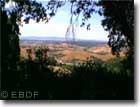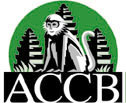What is a Protected Area (PA)?
A protected area is an area of land and/or sea especially dedicated to the protection and maintenance of biological diversity, and of natural and associated cultural resources, and managed through legal or other effective means. There are six categories for PAs:
- Strict Nature Reserve / Wilderness Protection
- Ecosystem conservation and recreation
- Conservation of natural features
- Conservation through active management
- Landscape / Seascape conservation and recreation
- Sustainable use of natural ecosystem
Although, all protected areas have the common goal
to effective biodiversity protection/conservation, the management
objectives for the different categories vary:
- Scientific research
- Wilderness protection
- Preservation of species and genetic diversity
- Maintenance of environmental services
- Protection of special natural / cultural features
- Tourism and recreation
- Education
- Sustainable use of resources from natural ecosystems
- Maintenance of cultural / traditional attributes
Financial sustainability
Protected areas need financial resources for cover
the current costs and for moving toward long-term biodiversity conservation
goals. In general, governments support biodiversity projects through
their endorsement of relevant agreements/policies/strategies, but
— especially in developing world — they cannot provide
a financial sustainability.
Factoring finance into PA planning and management
processes, and ensuring that there is sufficient human capacity to
use financial tools, is a key strategy for improving PA financial
sustainability.
Definition:
PA financial sustainability can be defined as the
ability to secure sufficient, stable and long-term financial resources,
and to allocate them in a timely manner and in an appropriate form,
to cover the full costs of PAs and to ensure that PAs are managed
effectively and efficiently with respect to conservation and other
objectives. In short, financial sustainability is not possible without
strong and effective institutions for PA management.
Requirements:
Financial sustainability requires that funds are
managed and administered in a way that promotes cost efficiency and
management effectiveness, allows for long-term planning and security,
and provides incentives and opportunities for managers to generate
and retain funds at the PA level.
Making PAs financially sustainable also means identifying
and overcoming the broader market, price, policy and institutional
distortions that act as obstacles to PA funding and financial sustainability.
Financial resources:
The sources for financing protected areas vary from
multilateral funds to private and community funds. The amount of the
future grants depends on the potential to generate environmental benefits
in line with the relevant global conventions and on past performance
based on national capacity, policies and practices and on successful
implementation, including transparency and good management.
Considering indirect and opportunity costs as well
as local development benefits as key elements of PA funding needs;
targeting cash and in-kind support to groups who incur PA costs, while
also securing fair contributions from PA beneficiaries, is critical
to PA financial and economic sustainability.
Today's situation
Finance:
Today the financial situation for protected areas
are more challenging then before. The global and national priorities
shifted from biodiversity conservation's and protected areas to poverty
reduction. At the same time the number of protected areas rapidly
increased. Additionally the economic liberalization, deregulation
and decentralization, the budgetary cutbacks for low priority issues,
the declining development assistance and the integration of protected
area management authorities into environmental ministries and portfolios
resulted in diminished resources for protected area management.
Management:
Protected areas in most cases have great professionals
like biologists and vets, bat have a lack of professional management.
Allocated funds will not be used in the most effective way and will
not result in long-term sustainable conservation. It is strongly recommended
to establish a strong management that have significant operational
experience in the target countries. A manager who has experience in
setting up multiple manufacturing organizations in developing countries
is better positioned than a conservation expert with little operational
experience.
Revised goals:
Protected area management need to re-think. It is strongly recommended
that among the long-term goals the reduction of poverty and the increase
of life quality get a high priority place.
There is also a strong need for
increasing the acceptance among the natives, which means an effective
communication and solutions on current issues at place (education,
poverty).







